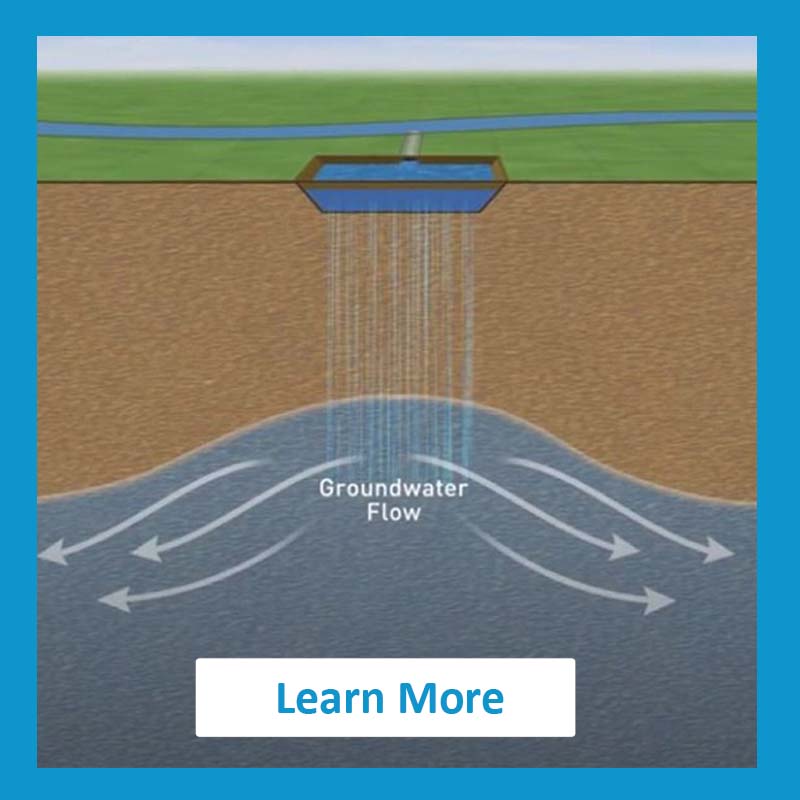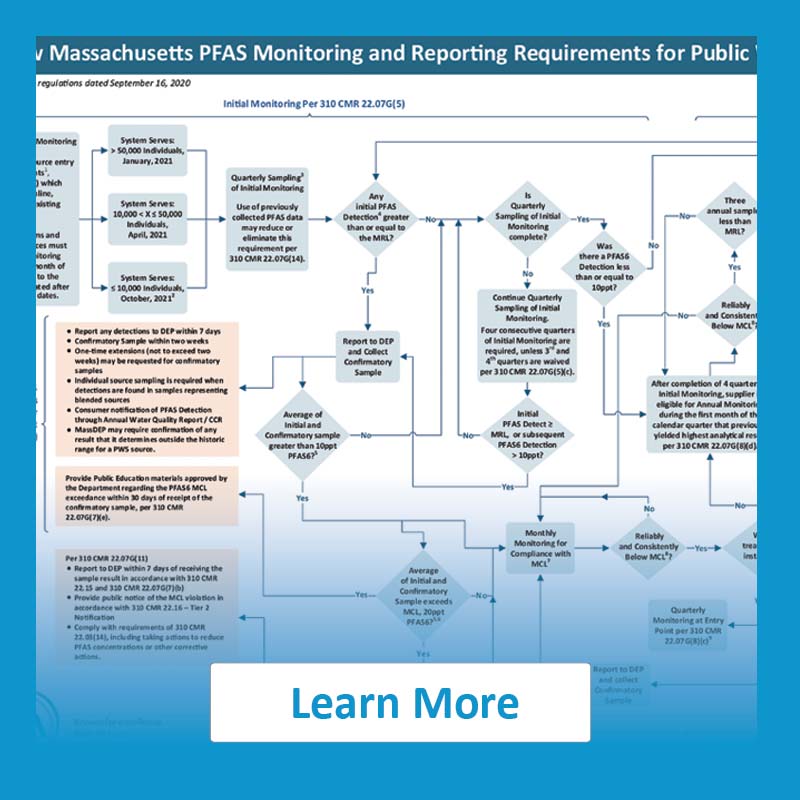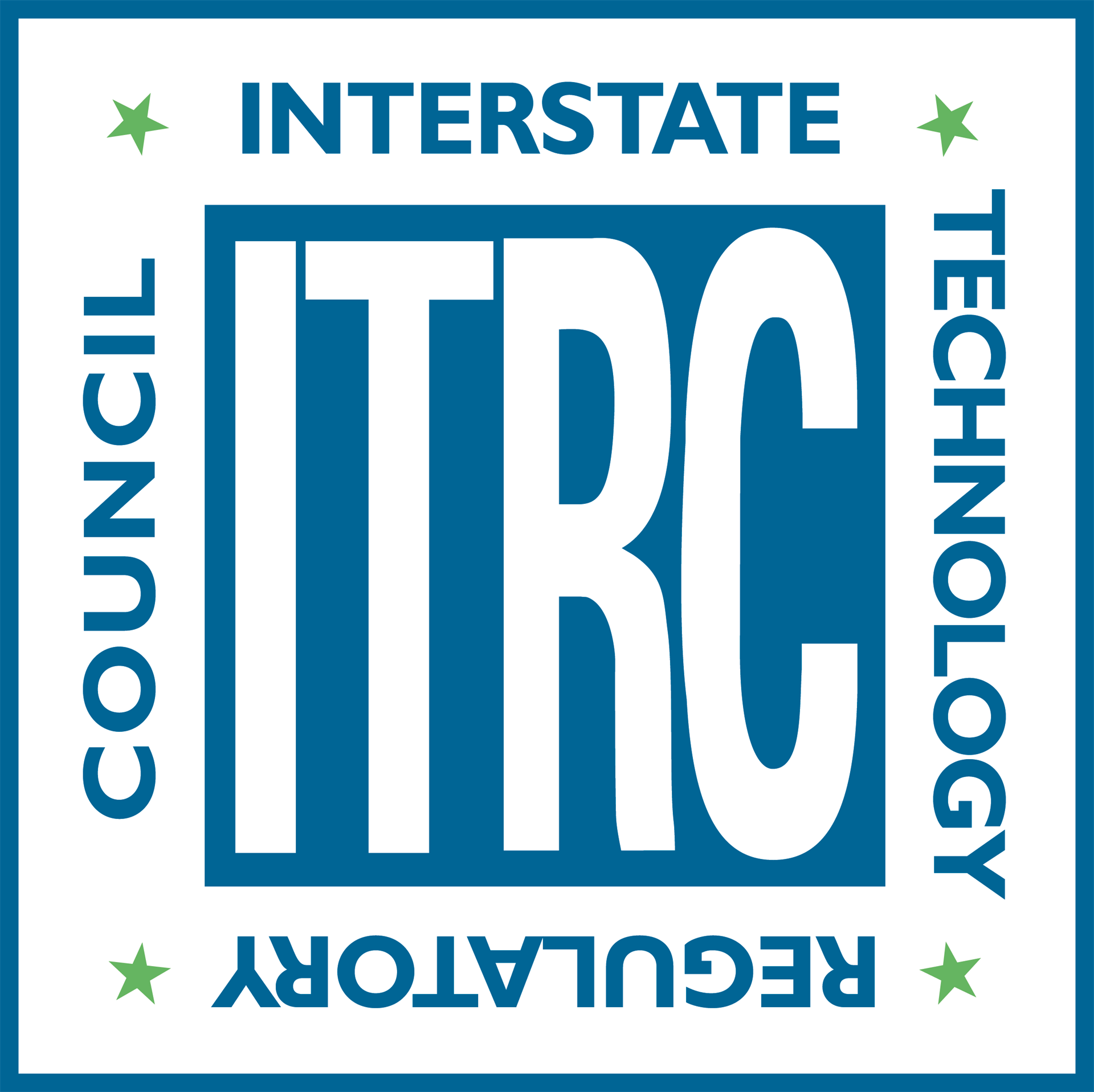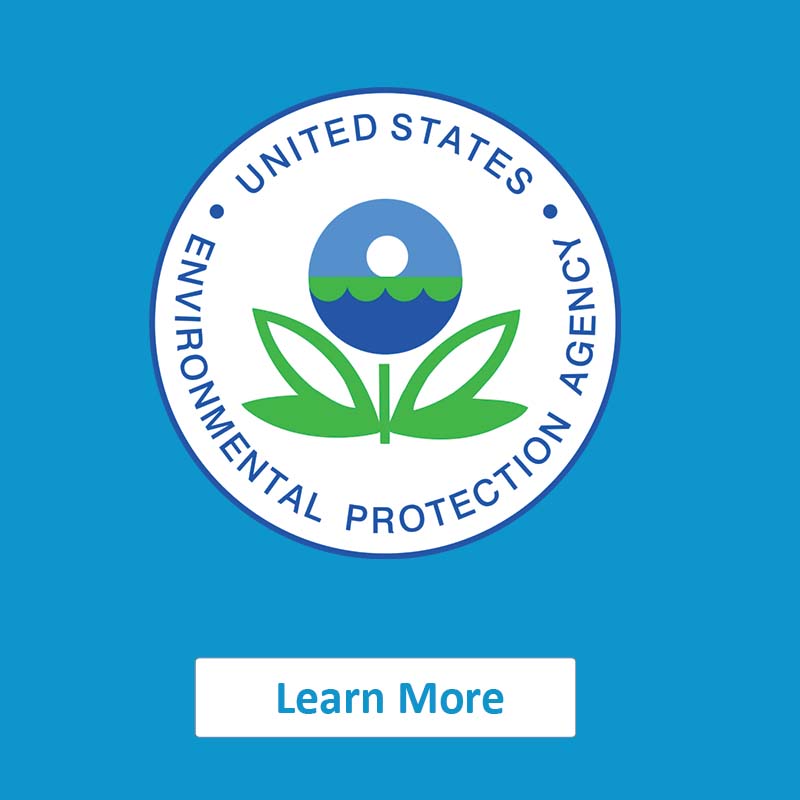Per- and Polyfluoroalkyl Substances (PFAS) Resource Center
GZA implements a careful and iterative approach to evaluating the potential environmental and health risks associated with the presence of PFAS. We implement stringent PFAS-specific procedures when collecting samples and use only laboratories that GZA has prequalified for analyzing PFAS samples. We take these precautions to reduce the potential for cross-contamination which could lead to false positive results. Our industrial, legal, water supply, governmental, and real estate clients appreciate our diligence in maintaining data quality.
Per- and Polyfluoroalkyl Substances (PFAS) Resource Center
PFAS are man-made chemicals which have been found to be widespread in the environment.
Sources of PFAS have included fire-fighting foams used by military bases, airports, fire-training centers, and fire departments; leachate from landfills; biosolids applications and effluent discharges from wastewater treatment facilities; discharges from electroplating, aerospace, electronics, and automotive industries; and a range of consumer products including car waxes, water repellents, cookware, stain-resistant materials, cosmetics, and food packaging.
GZA’s approach to PFAS mitigation:
Risk management - GZA can help you assess whether, and when, you should test for PFAS; evaluate potential exposure pathways; manage the ever-changing regulatory process from problem discovery to site closure; and develop sound scientific approaches for mitigating potential environmental and health risks.
Experience - GZA has considerable experience identifying the sources of these complex chemicals, understanding the various PFAS migration pathways, and developing scientific and fiscally responsible approaches to address these environmental concerns. Our senior practitioners participate in the development of national guidance documents and are actively involved in shaping future policy.
Stakeholder support – GZA will be your responsible technical advocate, providing experienced and qualified personnel to help you address the regulatory, public relations, and technical challenges surrounding PFAS.
The historical use of PFAS by certain industries is now facing scrutiny under a variety of rapidly changing regulatory requirements.
PFAS have been identified as emerging contaminants, and users and manufacturers are now being required to assess/remediate releases and track their PFAS compounds under the Toxics Release Inventory (TRI) reporting requirements. Industrial facilities may have to analyze for PFAS if their presence is suspected in wastewater effluent discharges. Previously “closed” disposal sites may be reopened by regulators to address PFAS contamination, potentially triggering additional site investigation and remediation, as well as future litigation issues. For decades, GZA has helped our industrial clients understand their regulatory obligations and has helped them comply with the myriad environmental regulations which affect them, acting as a strong advocate on our clients’ behalf.
- Site characterization
- Soil remediation
- Groundwater remediation
- Air and groundwater fate & transport modeling
- Permitting and regulatory support
- Ecological risk assessment
GZA’s technically diverse staff includes specialists in toxicology, geology, hydrogeology, fate and transport modeling, and environmental remediation.
Our team stays up to date on the latest regulatory requirements, scientific literature, and rapidly evolving treatment technologies for PFAS.
- Toxicology
- Litigation Support
- Forensic analyses
- Analysis of air dispersion pathway
- Fate and Transfer including groundwater and air modeling
Drinking water regulatory thresholds for PFAS are measured in parts-per-trillion. At these low levels, public and private water supplies in many communities are now facing treatment requirements for PFAS.
GZA’s Team can assist in the evaluation of how PFAS are entering a well field, the development of wellhead treatment or mitigation options, and, if necessary, the identification and development of a new water supply source and distribution system.
- Site characterization
- Groundwater modeling
- Plume delineation and migration pathways
- Water filtration
- Artificial recharge
PFAS has directly and indirectly affected local municipalities, states, and federal agencies.
Potential municipal impact areas may include landfills, water supplies, wastewater treatment facilities, leaching fields, biosolid land application areas, incinerators, and firefighting foam application sites. GZA has worked with municipalities in these situations providing sound technical, regulatory, and cost-effective solutions.
- Integrating regulation into cost effective solutions
- Stakeholder communication
- Permitting
- Source identification through forensic analyses
- Site characterization and remediation
- Development of alternative water supply sources
Proposed Mixed-Use Development PFAS Assessment and Permitting Assistance
New Hampshire Plating Superfund Site Supplemental Remedial Investigations
Former Military Base Groundwater Consulting Services for PFAS
_______________________________________________________________________________________________________________________________________________________________________________________







